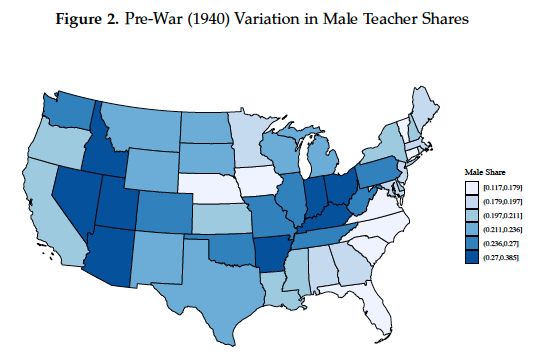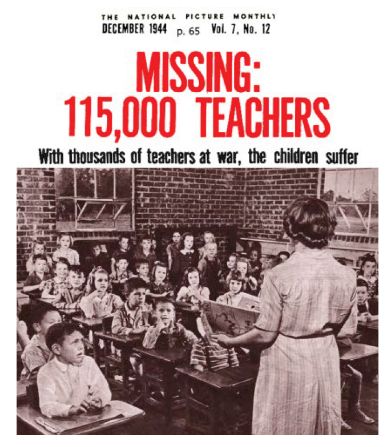Labor Economics, Economic History
In 1941, < 1 in 400 teachers held an emergency license. By 1947? 1 in every 8 teachers.
According to the NYT, some were “taxicab drivers, mechanics, telephone operators, or retired janitors.” 😳

In 1941, < 1 in 400 teachers held an emergency license. By 1947? 1 in every 8 teachers.
According to the NYT, some were “taxicab drivers, mechanics, telephone operators, or retired janitors.” 😳
For the school-aged cohorts, a 1 SD increase in missing teachers reduces
- HS graduation by 1.6 pp (2.5%)
- College graduation by 0.4 pp (3.6%)
- Weekly wage by 1.9%. That’s ~$40k in lifetime earnings for a full-time worker.


For the school-aged cohorts, a 1 SD increase in missing teachers reduces
- HS graduation by 1.6 pp (2.5%)
- College graduation by 0.4 pp (3.6%)
- Weekly wage by 1.9%. That’s ~$40k in lifetime earnings for a full-time worker.

Look at this drop in the male teacher share! The number of male teachers fell 35% from 1940-44.

Look at this drop in the male teacher share! The number of male teachers fell 35% from 1940-44.
Policymakers feared the consequences for students. So what happened to these kids?

Policymakers feared the consequences for students. So what happened to these kids?

